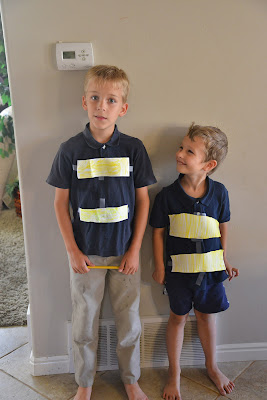This Honey Panna Cotta we had for our Honeybee Celebration was simply amazing. I can't find words adequate to describe how smooth it was! A cross between Greek Yogurt (which it contains) and Frozen Custard, maybe. And the honey gelatin on top is so mild and translucent---it looks beautiful and tastes just like honey and sunshine. We loved it. And it's easy enough to make that the older children did it all themselves, with me calling out instructions as I nursed Marigold on the couch.
We garnished with what this video, linked in the original recipe, calls "spun sugar" (and he's French, so he must be correct). I would have called it caramelized sugar to distinguish it from something like cotton candy. Anyway, it is easy to make. Just sugar melted with water. And don't be too alarmed that the sugar might suddenly crystallize. (Sometimes it does---it is actually really cool. It looks like this:
and it happens in the blink of an eye, if there's a sugar crystal or some other impurity on your spoon or on the sides of your pan. That's why the video says not to stir after the sugar liquifies.)
Anyway, if it does crystallize, it's easy to fix---just reheat it slowly and it will turn into a liquid again. Then you can proceed as directed to drizzle the caramel onto parchment in pretty patterns. This was something I had to help with, as it was a bit difficult for the boys to do.
Once this hardens, you can break it apart and use it for garnish! So elegant.
The Panna Cotta itself is extremely simple. There are only a few ingredients, so make sure you use only the highest . . . no, just kidding. Use whatever you want.
Honey Panna Cotta
2 ¼ tsp. (1 envelope) unflavored gelatin
2 cups heavy cream
1 tsp. vanilla (or a vanilla bean, if you have it)
1/3 cup honey
1/3 cup sugar
2 tsp. lemon juice
2 cups plain Greek yogurt
For the Honey Gelatin:
1 tsp. unflavored gelatin
2 T water
1/3 cup honey
1 cup water
Mix the gelatin with the milk in a small bowl. Set aside.
Meanwhile, mix the cream, vanilla, honey and sugar in a medium pan and bring to a boil. Remove from the heat and let cool slightly. Add the gelatin-milk mixture to the pan and stir until completely dissolved. Add the lemon juice and stir. Whisk in the Greek yogurt.
Pour the mixture into individual glasses, or into one large glass bowl. (I think individual servings are more elegant, but we doubled this recipe, so we did some in glasses and the rest in a big bowl.) Make sure to leave about 1/2 inch of space for the gelatin at the top of the glass. Chill at least 3 hours in the refrigerator.
To make the gelatin, combine 2 tablespoons of water and the 1 tsp of gelatin in a small bowl and stir. Set aside for 5 minutes. Meanwhile, combine the one cup of water with the 1/3 cup of honey in a pan and bring to a boil, stirring constantly. Remove from the heat. Add the gelatin mixture to it and stir until gelatin powder is completely dissolved.

















































